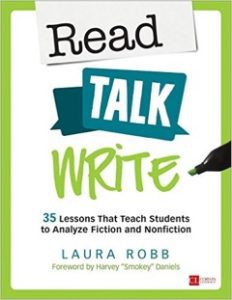Enjoy this guest post by Patrick Hausammann, I.T.R.T. Follow Patrick @PHausTech
As an education professional and a technology integration specialist, there is often a myth or misconception that presents itself. This myth is that a technology project is the same thing as technology integration. Often a project will be worked into a lesson or unit because there is extra time left or lack of snow days has yielded more instructional days than planned on.

These projects can be fantastic uses of technology and allow the students to pursue avenues they haven’t before. However, the students know when they do the project that it is a fleeting experience. In many cases, when the project ends traditional teaching resumes without technology. This is not to say that great teaching can’t occur without technology, however, the reach and innovative options for students research, audience, sharing/collaboration, and creativity are limited. The graphic below denotes a possible definition of effective technology integration, note the differences…

Without technology freely available in the classroom, either through school provided devices or bring your own device programs, students do not have the ability to tap into the instant stream of worldwide information and experts the internet provides. They also lack the avenues to pull the information together, collaborate with others outside of their classroom, and present the information in a visually stunning manner, such as with G Suite tools like Google Docs and Google Slides. We must break away from teaching methods that use technology as a reward or a once-in-a-while event.
Another graphic further delineates the differences between technology use and technology integration from TeachThought.

So, please take some time to truly think about how technology is used in your classroom or by your teachers. Is technology truly being used to make a difference? Is it an integral part of the classroom such as paper and pencils? Or is used when there is extra time left in class? Is a calculator the only technology used in math class? Is technology talked about as if it is on a pedestal or as if it is as prevalent as the air?
Never in any pursuit in education today, especially technology integration, should you feel this challenge is yours to take on by yourself. If not supported through technology integration specialists in your building or your administration team, seek the world’s input and support via social media, blogs, websites, etc. I stand willing to assist you among thousands (if not millions) of others; all you need to do is ask. My website with all links (blog, social media, etc.) and conference presentations can be found at www.epedtech.com. I truly believe that great pedagogy put together with innovative technology equals #EndlessPromise for our students. Let’s use our growth mindsets to unleash the innovative creativity in all of our students!

Further Resources:
- What Is Successful Technology Integration?
- The Difference Between Technology Use And Technology Integration
- Resources to Support the SAMR Model (technology planning)
- How to Use the TPACK Model to Integrate Technology
- Instructional Coaching: Driving Meaningful Tech Integration
- Educational Twitter Accounts
- Educational Twitter Chats
- Cybrary Man’s Twitter & PLN Page









